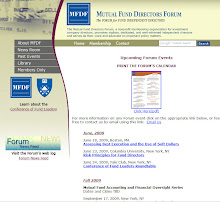In addition, the proposed rules would require changes to the compensation discussion and analysis disclosure in order to provide more information about a company’s overall compensation policies. The new disclosure would require information about how compensation policies create incentives that could affect the company’s risk and risk management, based on a company’s particular circumstances. The rules "would require a company to discuss and analyze its broader compensation policies and overall actual compensation practices for employees generally, including non-executive officers, if risks arising from those compensation policies or practices may have a material effect on the company."
Under the proposal, the following situations could require additional disclosure about a company’s compensation policies:
- At a business unit of the company that carries a significant portion of the company’s risk profile;
- At a business unit with compensation structured significantly differently than other units within the company;
- At business units that are significantly more profitable than others within the company;
- At business units where the compensation expense is a significant percentage of the unit’s revenues; or
- That vary significantly from the overall risk and reward structure of the company, such as when bonuses are awarded upon accomplishment of a task, while the income and risk to the company from the task extend over a significantly longer period of time.
- The general design philosophy of the company’s compensation policies for employees whose behavior would be most affected by the incentives established by the policies, as such policies relate to or affect risk taking by those employees on behalf of the company, and the manner of its implementation;
- The company’s risk assessment or incentive considerations, if any, in structuring its compensation policies or in awarding and paying compensation;
- How the company’s compensation policies relate to the realization of risks resulting from the actions of employees in both the short term and the long term, such as through policies requiring claw backs or imposing holding periods;
- The company’s policies regarding adjustments to its compensation policies to address changes in its risk profile;
- Material adjustments the company has made to its compensation policies or practices as a result of changes in its risk profile; and
- The extent to which the company monitors its compensation policies to determine whether its risk management objectives are being met with respect to providing incentives to its employees.
The text of the proposal is available at: http://www.sec.gov/rules/proposed/2009/33-9052.pdf
Related articles:
- "SEC Publishes Proxy Disclosure and Solicitation Proposals," July 13, 2009
- "SEC Considers Slate of Proxy Rule Changes," July 2, 2009
- "July 1 SEC Open Meeting to Include "Say on Pay" Proposals," June 29, 2009





